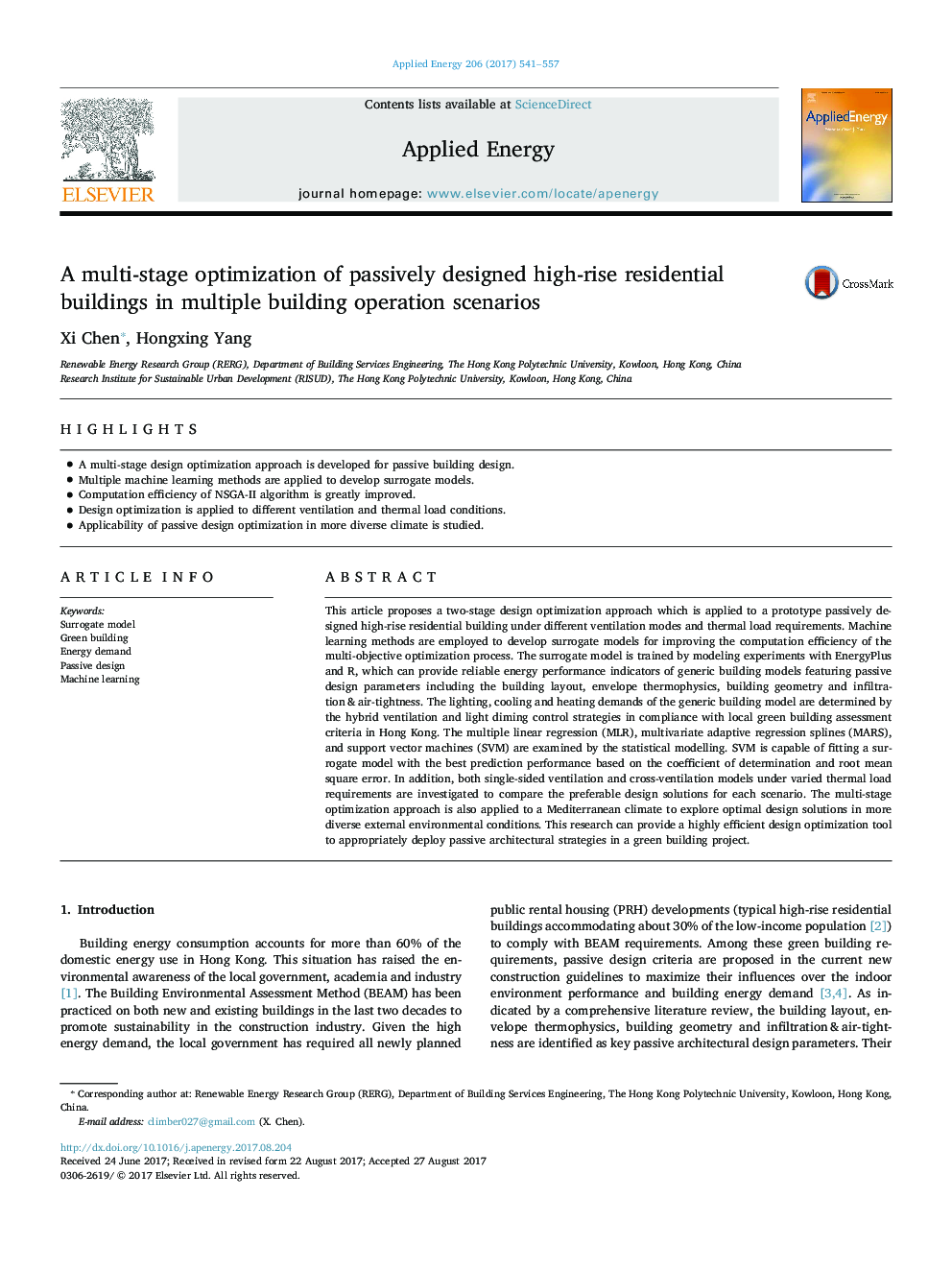| Article ID | Journal | Published Year | Pages | File Type |
|---|---|---|---|---|
| 4915700 | Applied Energy | 2017 | 17 Pages |
Abstract
This article proposes a two-stage design optimization approach which is applied to a prototype passively designed high-rise residential building under different ventilation modes and thermal load requirements. Machine learning methods are employed to develop surrogate models for improving the computation efficiency of the multi-objective optimization process. The surrogate model is trained by modeling experiments with EnergyPlus and R, which can provide reliable energy performance indicators of generic building models featuring passive design parameters including the building layout, envelope thermophysics, building geometry and infiltration & air-tightness. The lighting, cooling and heating demands of the generic building model are determined by the hybrid ventilation and light diming control strategies in compliance with local green building assessment criteria in Hong Kong. The multiple linear regression (MLR), multivariate adaptive regression splines (MARS), and support vector machines (SVM) are examined by the statistical modelling. SVM is capable of fitting a surrogate model with the best prediction performance based on the coefficient of determination and root mean square error. In addition, both single-sided ventilation and cross-ventilation models under varied thermal load requirements are investigated to compare the preferable design solutions for each scenario. The multi-stage optimization approach is also applied to a Mediterranean climate to explore optimal design solutions in more diverse external environmental conditions. This research can provide a highly efficient design optimization tool to appropriately deploy passive architectural strategies in a green building project.
Related Topics
Physical Sciences and Engineering
Energy
Energy Engineering and Power Technology
Authors
Xi Chen, Hongxing Yang,
